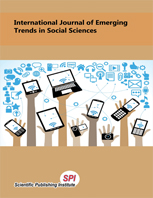The nature and challenges of river policing: A study on Tangail region river police unit
DOI:
https://doi.org/10.55217/103.v18i1.905Keywords:
River crime, River policing, River security.Abstract
This study examines the challenges faced by the Tangail River Police Unit in deterring river-based crimes such as illegal fishing, digging of sand, and smuggling in terms of understanding counterstrategies that will enhance the efficiency of law enforcement. A systematic quantitative study of 57 officers of mixed ranks was conducted, and Conflict Theory, Routine Activity Theory, and Resource Dependency Theory are utilized to structure the study to learn the socio-economic and structural determinants of such crimes. The report pinpoints severe challenges, including shortages of resources, inadequate training, and inadequate inter-agency coordination, that constrain the capacity of effective policing. The officers barely have necessary equipment and skills in crime detection and prevention, which impacts directly on the efficiency of law enforcement. Shortages of resources must be remedied, with more surveillance technology, training initiatives, and agency coordination to improve river security. The study identifies the paramount importance of investing in river policing facilities, urging policymakers to place top priority on resource allocation, training, and inter-agency coordination as a means of gaining more effective crime prevention and safe waterways for Bangladesh.


